Since January, we have highlighted that a China slowdown was brewing in 2017 (see Why China’s Growth is Strong Now – and Why it Will Slow in 2017, 5 January). We are now seeing increasing evidence of this taking place: PMI decreased sharply in April, commodity prices for oil and metals have lost momentum and the Chinese stock market has fallen over the past month to the lowest level in four months
As we have argued for some time, Chinese tightening measures to reign in soaring house prices are set to slow growth in 2017. A ‘normalisation’ of infrastructure investments after the big boost in 2016 is also set to drive lower activity this year.
While we have been looking for the slowdown to be moderate, an increase in financial stress lately poses a clear downside risk to China’s growth this year (see Research China: Financial stress on the rise again, 4 May). In China Daily on 5 May, an editorial started out ‘China is in the midst of what proponents are heralding as its harshest crackdown on financial risks in history: a campaign that is by no means a fleeting gesture’. China Daily is state media and tends to represent the views of the leadership. While tackling financial risks in China is important, there is a clear danger that this is taking place when China was already set to slow down and that it is exacerbating the downturn. It comes on top of the risk of protective trade measures from US President Donald Trump in H2, once his trade investigation and steel probe are finished around mid-year. This could hurt Chinese exports.
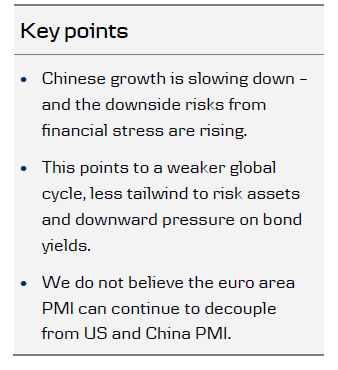
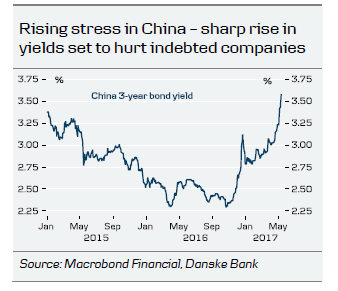
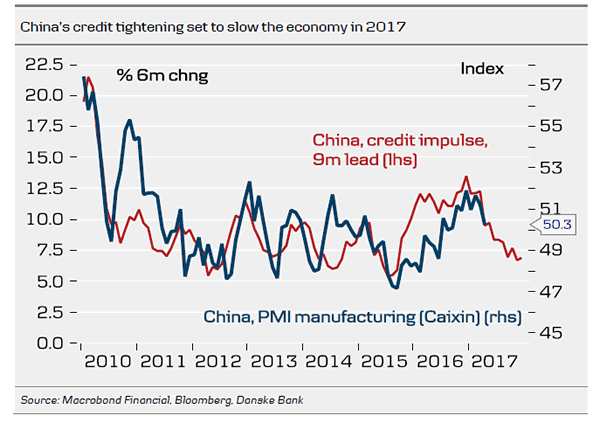
Boost to global reflation reverses – rising risk for global markets
So, how should a weaker Chinese economy affect the global economy and markets?
1. Lift to global growth reverses: China is by far the biggest contributor to the global economy, driving one-third of global growth. The country was a major driver behind the global recovery in 2016. Commodity exporting emerging markets benefited strongly from both higher volumes and prices and developed markets saw a lift to exports to China and other emerging markets countries. With China slowing in 2017, the lift to the global economy reverses and this is a big reason why we look for a peak in the PMI cycle in H1.
2. From reflationary to disinflationary force: The sharp rise in commodity prices seen in 2016 was pulled largely by higher Chinese activity. With Chinese companies consuming 50% of global metals, China is a major driver of commodity prices. In the past few months, both metal prices and oil prices have declined, which in our view is linked partly to the softer Chinese economy. With the commodity price boost turning into a drag on global inflation, we believe global central banks will lose an important pillar in their mission to push inflation higher on a sustained basis; not least in the euro area, where slack is still ample and wage pressures low (see Research: Euro area wage growth should stay subdued, not supporting core inflation significantly, 5 May).
3. Less support to risk sentiment: A softer global cycle and rising downside risks from China have already had an impact on Chinese stocks, commodity prices and inflation markets, where euro area 5Y5Y breakeven inflation is back at 1.6% – the level reached when the ECB initiated its asset purchase programme in January 2015. So far, though, risk sentiment in the US, Europe and emerging markets has stayed upbeat on the back of strong profit growth and relief that political uncertainty is reduced following the election of Emmanuel Macron as the new French President. We recently turned neutral on equities on a short- to medium-term horizon.
4. Downside pressure on long bond yields: While Fed hikes and a possible change of forward guidance from the ECB are putting upward pressure on bond yields, the disinflationary force from China will put a downward pressure on yields. We believe these two forces will even each other out and expect range-trading markets for some time. Hence, we recommend investors take a tactical approach to acting in the bond market, trading the range rather than having a clear directional bias
5. Headwind for emerging markets assets: So far, there has been very little impact on emerging markets outside of China. Emerging market equities have continued higher despite lower commodity prices and rising stress in China. However, if we are right that the China slowdown will continue this year, emerging market assets will start to face some headwind from this angle. Emerging markets are still a popular carry game among investors, though. Therefore, we stick to our overweight on emerging markets versus developed markets for now, as the carry from higher yields and lower valuation in stocks is attractive and drives flows into emerging markets. However, any sign of spillover from China to other emerging markets should be on the radar screen.
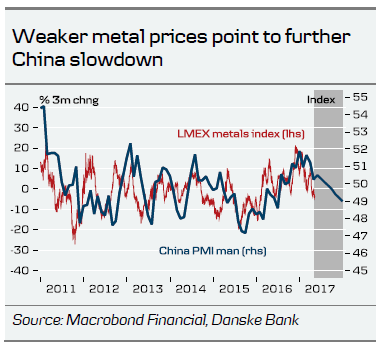
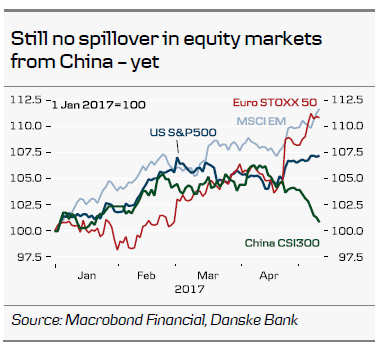
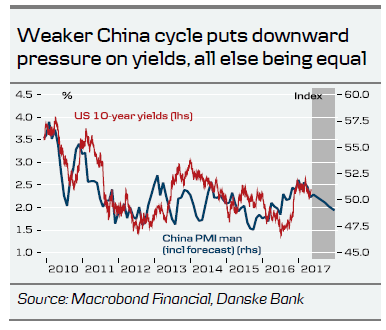
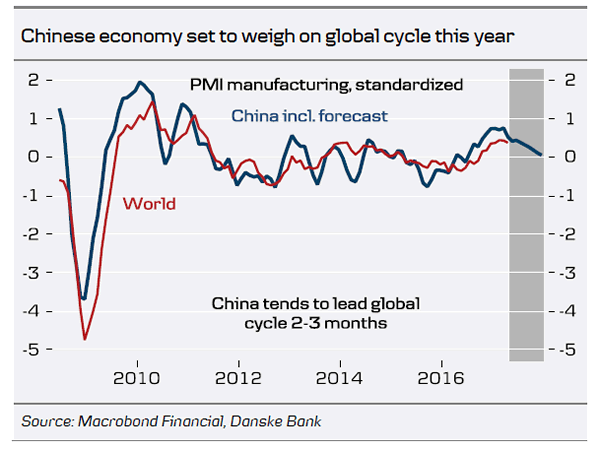
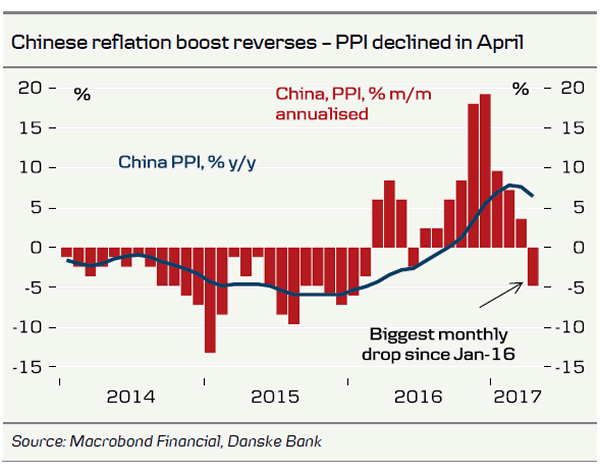
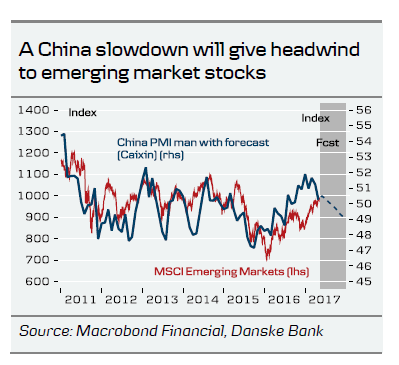
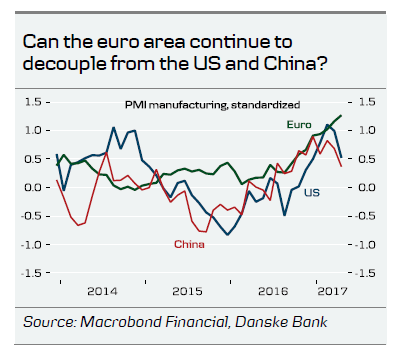
Can the euro area decouple? We don’t think so
So far, we have yet to see the same signs of a peak in euro business cycle indicators that we are witnessing in the US and China. Euro PMI has continued to move higher and points to robust growth. The economic surprise index in the euro area is also still high. This stands in sharp contrast to the steep fall that has taken place in the US. This raises the question whether the euro area PMI can continue to decouple.
We doubt this is the case. Part of the impetus for euro area manufacturing is currently coming from the export sector. This factor is likely to fade, with China slowing down. Euro area private consumption has also faced headwinds from a decline in real wage growth moving into negative territory (due to the rise in inflation) after a period of a decent increases in purchasing power when inflation was 1.5 percentage points lower than wage growth. Overall, we look for euro PMI to peak soon and follow the US and China lower. We do not expect a big setback or the recovery to derail but simply believe that the pace will slow a bit. However, in combination with a weaker global backdrop, this means the current very positive picture of the euro area will be less upbeat when we get to the end of the year. With inflation set to decline to around 1.0-1.5% in early 2018, we still believe the ECB will extend asset purchases into the new year but reduce our estimate of the pace to EUR40bn per month













